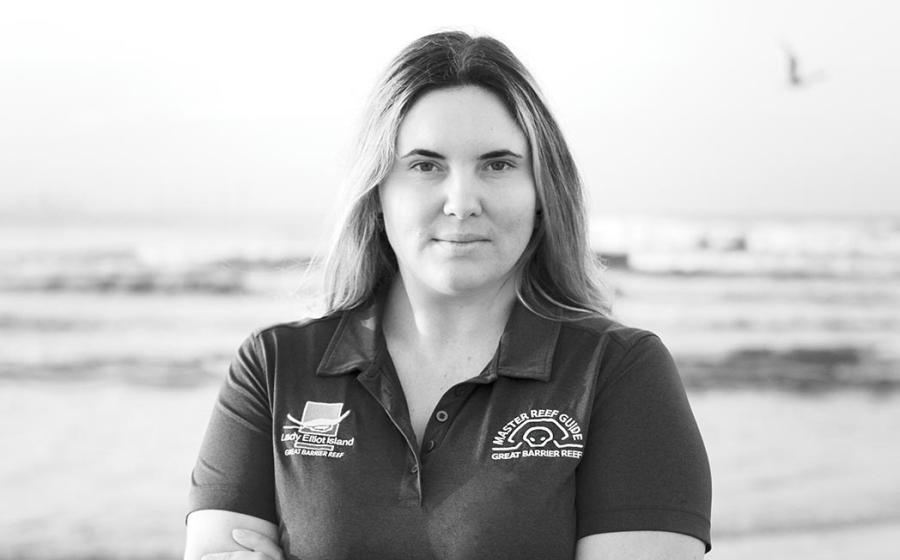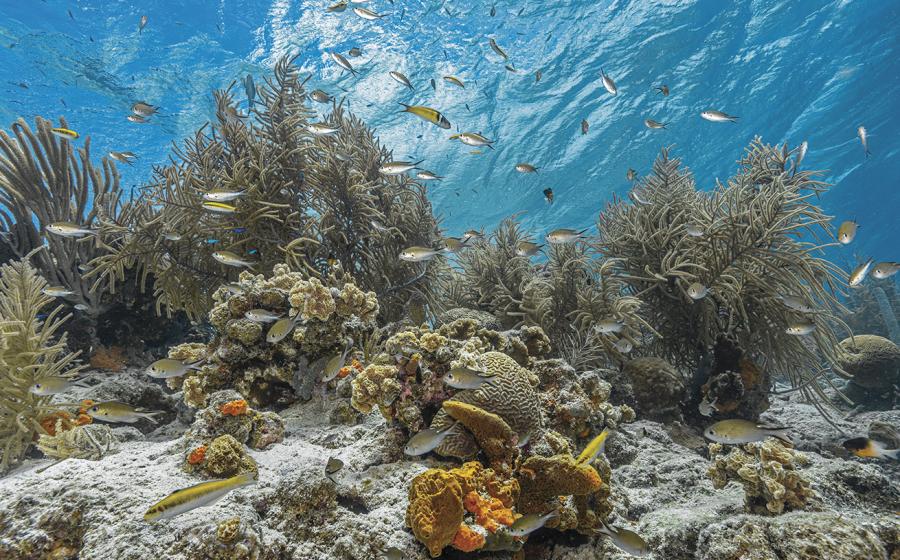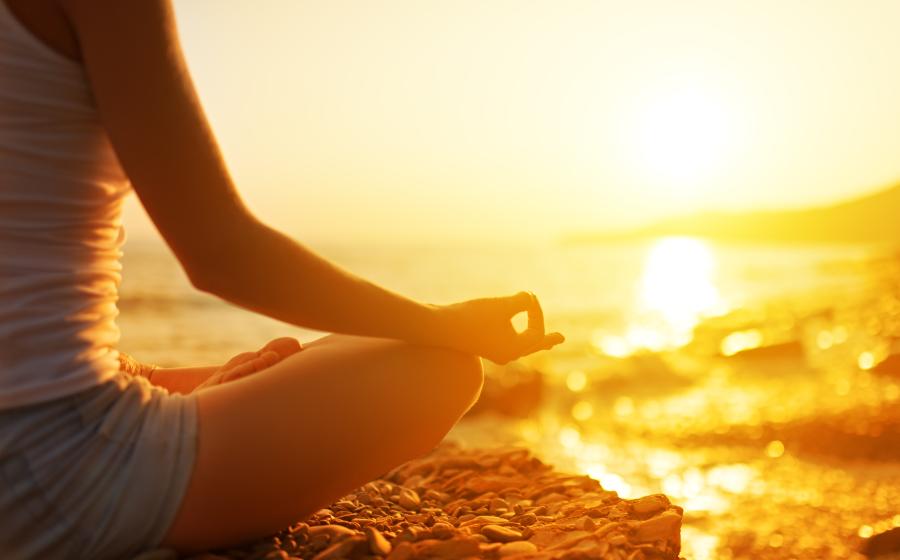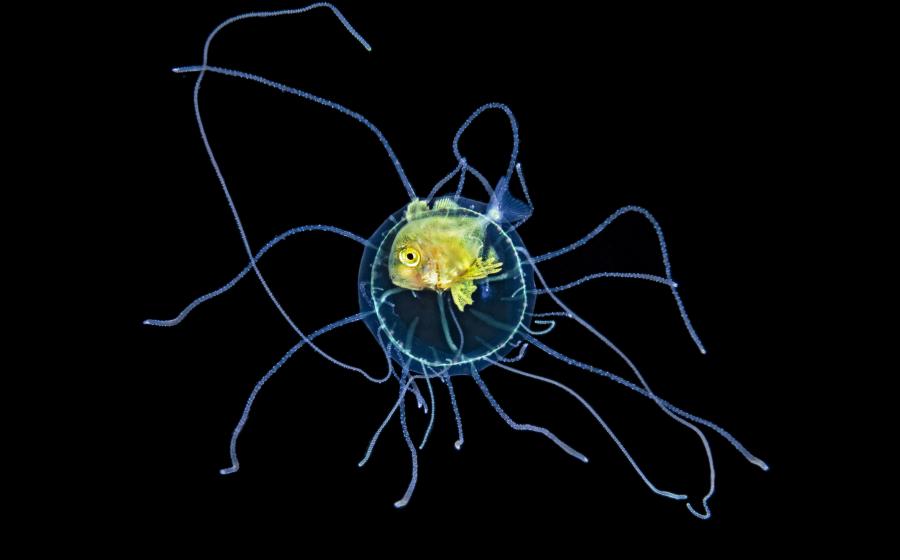The Right Attitude
 |
| Get horizontal by fine-tuning your gear to compensate for the addition of a camera. |
November 2002
I don't have problems hovering vertically in the water column and maintaining neutral buoyancy. But I do have trouble when I'm taking photos and I have to hover horizontally. Any tips?
--Pocholo Ignacio, Mutinlupa City, Philippines
The addition of a camera adds weight, depending on the system you use. Some are almost neutrally buoyant, but I prefer a camera system that is slightly negative so I can rest it on the bottom if necessary. Of course, there is a difference between "slightly" negative and a camera system heavy enough to become a hassle.
Regardless of the camera's weight, you'll have your hands full when you take one under water. It makes sculling with your hands, in order to change or maintain your position, nearly impossible. Adding a camera and strobe can make a big difference in how you wear your weight so you can make a safe, comfortable dive. The next time you take your camera under water, try these tips:
-
Fine-tune your dive gear to compensate for the addition of a camera. Your BC affects how you are oriented in the water, and the position of your weights on the belt or in a weight-integrated BC makes a difference. Some fins are better than others for holding position in midwater as well, so careful consideration should be given to your choice of fins.
-
Perfect your buoyancy trim while kneeling in the sand. Hold your camera system in a normal shooting position and see if you tend to pitch forward due to the weight of the system.
-
Now pay attention to your weights. If you have a weight-integrated BC and all your lead is in the forward pockets, adding a camera can easily change your center of gravity. If the BC offers the option of rear weight integration, try that. Or try using a waist belt with weights oriented more toward the rear.
-
Make a checkout dive. Many dive operators offer an orientation dive in a shallow area free of current so divers can determine exactly how much weight is right for whatever thermal protection they're using. With a camera, that orientation dive is even more important to ensure your comfort and productivity throughout the week.
Tips for Night Photography
What do you do differently in order to take photos at night if you don't want to do macro? I have a Nikonos V with 105 strobe and 20mm lens (also macro attachments and 35mm lens).
--Diana Brethauer, via e-mail
Yes, macro is great at night, but there is more than just small critters roaming the reef.
Some thoughts on night photography:
-
I prefer the night for fish portraits. Fish you can't get close to during the day, especially with framers, are approachable at night. Plus, there are nocturnal creatures you rarely see during the day.
-
Keep in mind that wide-angle is hard at night except in very clear water. Any particles show up white against black and are very noticeable, though they're pretty easy to clean up once in digital format (via Photoshop).
I don't do every night dive anymore, because they're usually scheduled at the end of a long day of diving. But in terms of photo productivity, they are some of the best.
Digital vs. Film: The Debate Continues
Does the Nikon D1X take the same quality pictures (saturation and resolution) as the Nikon F100? Is the photographic quality of the D1X suitable for publication? If you had to make the choice, which camera would you shoot with all the time?
--via e-mail
Your question--whether the Nikon D1X will take as good a picture as the F100--goes to the very heart of digital versus film. In answer to that question, yes and no. The resolution and ultimate file size is better and bigger with film, but the D1X is impressive as well. I think you have to decide on your specific needs to know whether film or digital is better for you.
I do have a choice, and I use both. If I had to choose only one, it would probably be the film camera because some of my clients require files that are bigger than the 32-megabyte TIF files I can get from the D1X. For example, a slide scanned on our Nikon Coolscan 4000 can easily be saved as a 55-megabyte file. I always feel I have to shoot to the highest common denominator. Right now, that is film. Having said that, I have recently delivered a number of assignments where the clients had the choice of digital and film shot side-by-side. They have actually been choosing digital because:
-
They can see it easily on their computers without scanning.
-
It integrates easily into their prepress workflow.
-
It saves them money on scanning.
-
It's quick.
Three hundred dpi is the magic number for magazine reproduction. Working in NEF (Nikon's proprietary imaging software) and saving to TIF renders 33-megabyte files. In Adobe Photoshop, that equals about 7" x 10". So, while some magazines (Sports Illustrated, most notably) regularly manage to get spreads and covers from digital images, my work with RSD from digital capture has been limited to somewhat less than full-page images.
Medium Format Under Water?
Does Seacam have a housing for medium-format cameras? Is this a preferred choice over 35mm, not considering costs?
--Brian Leong
No, Seacam does not presently offer a housing for a medium-format camera. There are a few commercially available medium-format camera housings, including the Aquatica 67 for the Mamiya RZ-67 and the Gates H38 housing for the Hasselblad Superwide. On the used market you might find a Rolleimarin, Pentax 6x7 or even an old Hasselblad housing. There have been conversations about housing the Mamiya AF 645 by Seacam, and that may happen in the near future, but lately, resources have been directed toward digital housings like the Nikon D1X and D100.
But digital is a recent distraction. Why have housing manufacturers not designed housings for medium format? For sure, there is greater ultimate resolution for a same-size enlargement from a larger piece of film, so why doesn't medium format rule? Several reasons:
THE UNIVERSE OF SHOOTERS. Far more photographers use 35mm cameras than medium format. When you whittle down that universe to those who own medium format and might want to house their camera, the numbers get pretty small.
NUMBER OF FRAMES PER ROLL. While 35mm offers 36-exposure rolls, medium-format frames per roll depends on whether the camera takes 2 1/4" x 2 1/4" images or one of two other popular formats, but with the 2 1/4" as an example, you'd get 12 or 24 exposures from 120 or 220 film, respectively. Since you can't change film under water, more frames per roll is an advantage.
DEPTH OF FIELD. At any given focal length and aperture, depth of field is the same whether it is 35mm or medium-format film. But whereas a 35mm lens is an extreme wide-angle lens on a medium-format camera, it does not have the equivalent depth of field of a superwide lens like the 16mm on a 35mm camera. Both may cover 180 degrees, but the depth of field is not the same. Quite the contrary, it still has only the depth of field of a normal 35mm lens as would be found on a Nikonos. The kinds of subjects a wide-angle shooter seeks typically require greater depth of field for setups like soft-coral foreground and diver silhouette in the background. There is a technical explanation for it all, but suffice it to say that in underwater work, you can't always stop down to f-22 to maximize depth of field. Focus can be challenging with medium format.
VARIETY OF LENSES AVAILABLE. There are more types and levels of sophistication in 35mm lenses than with medium format. Just in the Nikon world, the 16mm fisheye, 17-35mm wide-angle zoom, plus the 60mm and 105mm macro lenses would be impossible to replicate from any medium- format manufacturer.
If there were such a housing, I'd be the first in line to buy it. Done right, that medium-format piece of film lying on a light table is absolutely stunning.
|| |---|
| |
| Get horizontal by fine-tuning your gear to compensate for the addition of a camera.|
|
| Get horizontal by fine-tuning your gear to compensate for the addition of a camera.|
November 2002
I don't have problems hovering vertically in the water column and maintaining neutral buoyancy. But I do have trouble when I'm taking photos and I have to hover horizontally. Any tips?
--Pocholo Ignacio, Mutinlupa City, Philippines
The addition of a camera adds weight, depending on the system you use. Some are almost neutrally buoyant, but I prefer a camera system that is slightly negative so I can rest it on the bottom if necessary. Of course, there is a difference between "slightly" negative and a camera system heavy enough to become a hassle.
Regardless of the camera's weight, you'll have your hands full when you take one under water. It makes sculling with your hands, in order to change or maintain your position, nearly impossible. Adding a camera and strobe can make a big difference in how you wear your weight so you can make a safe, comfortable dive. The next time you take your camera under water, try these tips:
Fine-tune your dive gear to compensate for the addition of a camera. Your BC affects how you are oriented in the water, and the position of your weights on the belt or in a weight-integrated BC makes a difference. Some fins are better than others for holding position in midwater as well, so careful consideration should be given to your choice of fins.
Perfect your buoyancy trim while kneeling in the sand. Hold your camera system in a normal shooting position and see if you tend to pitch forward due to the weight of the system.
Now pay attention to your weights. If you have a weight-integrated BC and all your lead is in the forward pockets, adding a camera can easily change your center of gravity. If the BC offers the option of rear weight integration, try that. Or try using a waist belt with weights oriented more toward the rear.
Make a checkout dive. Many dive operators offer an orientation dive in a shallow area free of current so divers can determine exactly how much weight is right for whatever thermal protection they're using. With a camera, that orientation dive is even more important to ensure your comfort and productivity throughout the week.
Tips for Night Photography
What do you do differently in order to take photos at night if you don't want to do macro? I have a Nikonos V with 105 strobe and 20mm lens (also macro attachments and 35mm lens).
--Diana Brethauer, via e-mail
Yes, macro is great at night, but there is more than just small critters roaming the reef.
Some thoughts on night photography:
I prefer the night for fish portraits. Fish you can't get close to during the day, especially with framers, are approachable at night. Plus, there are nocturnal creatures you rarely see during the day.
Keep in mind that wide-angle is hard at night except in very clear water. Any particles show up white against black and are very noticeable, though they're pretty easy to clean up once in digital format (via Photoshop). I don't do every night dive anymore, because they're usually scheduled at the end of a long day of diving. But in terms of photo productivity, they are some of the best.
Digital vs. Film: The Debate Continues
Does the Nikon D1X take the same quality pictures (saturation and resolution) as the Nikon F100? Is the photographic quality of the D1X suitable for publication? If you had to make the choice, which camera would you shoot with all the time?
--via e-mail
Your question--whether the Nikon D1X will take as good a picture as the F100--goes to the very heart of digital versus film. In answer to that question, yes and no. The resolution and ultimate file size is better and bigger with film, but the D1X is impressive as well. I think you have to decide on your specific needs to know whether film or digital is better for you.
I do have a choice, and I use both. If I had to choose only one, it would probably be the film camera because some of my clients require files that are bigger than the 32-megabyte TIF files I can get from the D1X. For example, a slide scanned on our Nikon Coolscan 4000 can easily be saved as a 55-megabyte file. I always feel I have to shoot to the highest common denominator. Right now, that is film. Having said that, I have recently delivered a number of assignments where the clients had the choice of digital and film shot side-by-side. They have actually been choosing digital because:
They can see it easily on their computers without scanning.
It integrates easily into their prepress workflow.
It saves them money on scanning.
It's quick. Three hundred dpi is the magic number for magazine reproduction. Working in NEF (Nikon's proprietary imaging software) and saving to TIF renders 33-megabyte files. In Adobe Photoshop, that equals about 7" x 10". So, while some magazines (Sports Illustrated, most notably) regularly manage to get spreads and covers from digital images, my work with RSD from digital capture has been limited to somewhat less than full-page images.
Medium Format Under Water?
Does Seacam have a housing for medium-format cameras? Is this a preferred choice over 35mm, not considering costs?
--Brian Leong
No, Seacam does not presently offer a housing for a medium-format camera. There are a few commercially available medium-format camera housings, including the Aquatica 67 for the Mamiya RZ-67 and the Gates H38 housing for the Hasselblad Superwide. On the used market you might find a Rolleimarin, Pentax 6x7 or even an old Hasselblad housing. There have been conversations about housing the Mamiya AF 645 by Seacam, and that may happen in the near future, but lately, resources have been directed toward digital housings like the Nikon D1X and D100.
But digital is a recent distraction. Why have housing manufacturers not designed housings for medium format? For sure, there is greater ultimate resolution for a same-size enlargement from a larger piece of film, so why doesn't medium format rule? Several reasons:
THE UNIVERSE OF SHOOTERS. Far more photographers use 35mm cameras than medium format. When you whittle down that universe to those who own medium format and might want to house their camera, the numbers get pretty small.
NUMBER OF FRAMES PER ROLL. While 35mm offers 36-exposure rolls, medium-format frames per roll depends on whether the camera takes 2 1/4" x 2 1/4" images or one of two other popular formats, but with the 2 1/4" as an example, you'd get 12 or 24 exposures from 120 or 220 film, respectively. Since you can't change film under water, more frames per roll is an advantage.
DEPTH OF FIELD. At any given focal length and aperture, depth of field is the same whether it is 35mm or medium-format film. But whereas a 35mm lens is an extreme wide-angle lens on a medium-format camera, it does not have the equivalent depth of field of a superwide lens like the 16mm on a 35mm camera. Both may cover 180 degrees, but the depth of field is not the same. Quite the contrary, it still has only the depth of field of a normal 35mm lens as would be found on a Nikonos. The kinds of subjects a wide-angle shooter seeks typically require greater depth of field for setups like soft-coral foreground and diver silhouette in the background. There is a technical explanation for it all, but suffice it to say that in underwater work, you can't always stop down to f-22 to maximize depth of field. Focus can be challenging with medium format.
VARIETY OF LENSES AVAILABLE. There are more types and levels of sophistication in 35mm lenses than with medium format. Just in the Nikon world, the 16mm fisheye, 17-35mm wide-angle zoom, plus the 60mm and 105mm macro lenses would be impossible to replicate from any medium- format manufacturer.
If there were such a housing, I'd be the first in line to buy it. Done right, that medium-format piece of film lying on a light table is absolutely stunning.






